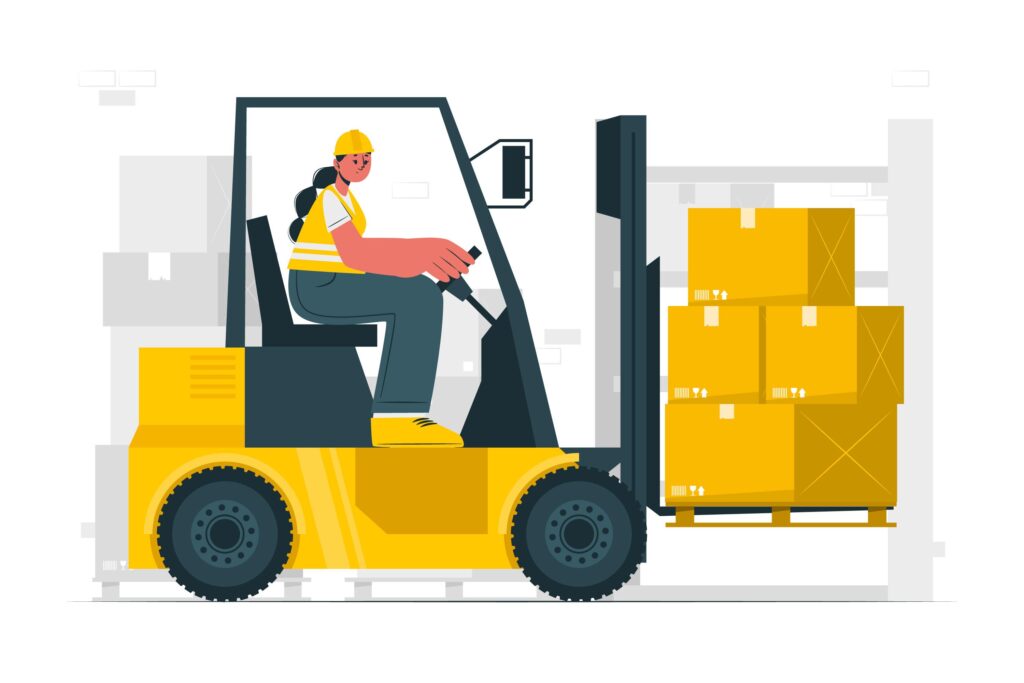Navigating the intricate world of powered industrial trucks demands an unwavering commitment to safety, with forklift stability emerging as a cornerstone. Recognized as a pivotal element by the U.S. Occupational Safety and Health Administration (OSHA), ensuring the stability of forklifts is non-negotiable for safe and efficient operations. As a seasoned expert in the field, this guide takes a meticulous approach to unraveling the intricacies of the forklift stability triangle, delving into its fundamental principles and offering valuable insights into its real-world implications for operators.
Learn More : Forklift Safety Rules
Understanding the Forklift Stability Triangle: A Vital Concept
OSHA places forklift stability on par with safe load capacity, balance, and maximum load requirements. Central to this is the forklift stability triangle, a concept rooted in three key points on a standard forklift:
Point A: Pivot point on the rear axle
Point B: Left front wheel
Point C: Right front wheel
Connecting these points forms the stability triangle. OSHA deems a forklift well-balanced as long as its center of gravity resides within this triangle. Any shift of the load beyond this triangle can lead to tipping hazards.
Determining the Stability Triangle for Forklifts: Practical Insights
While grasping the theory is essential, practical application is equally crucial. Tip-overs become risks when operators overlook the stability triangle. Key factors influencing forklift balance include:
1. Center of Gravity:
- Distribute weight evenly for irregular loads.
- Keep the load’s center of gravity as close to the forks’ center horizontally to minimize accident risks.
2. Shifting Center of Gravity:
- As a load is placed, the center of gravity shifts forward.
- Adhering to weight restrictions and centering the load on the forks prevents accidents.
Practical Tips for Ensuring Stability Triangle Effectiveness:
1. Never Exceed Weight Capacity:
Oversized or irregular loads can exceed capacity, leading to tip-overs.
2. Position Load Close to Front Wheels:
Minimize load distance and concentrate weight by placing it close to the mast.
3. Drive Slowly with Heavy Loads:
When handling close-to-capacity loads, slow and even acceleration maintains stability.
4. Handling a Tipping Forklift:
Avoid jumping; brace yourself and stay within the operator area.
Learn More : Electric Forklifts vs. Internal Combustion Forklifts
Significance of Forklift Stability Training: OSHA Standards
Workers must grasp the stability triangle before operating forklifts. OSHA’s standard 29 CFR 1910.178 Appendix A outlines guidelines for the forklift stability triangle, emphasizing:
- Proper turning techniques
- Best practices for load stability
- Stability maintenance
- Safe speed considerations for the forklift stability triangle’s center of gravity
Forklift stability is not just a theoretical concept; it’s a practical necessity for safe operations. Comprehensive training, aligned with OSHA standards, ensures that operators navigate the intricacies of the stability triangle with confidence, enhancing workplace safety and reducing the risk of accidents.

